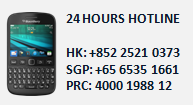Loading grain (and other moisture sensitive cargoes) in Vancouver, Canada
We are grateful to Roger A Day from Shipowners Assurance Management (BC) Ltd, our correspondents in Vancouver, for this article on loading cargo in the rain in Vancouver.
At some times of the year on Canada's west coast, mainly between October and March, Pacific depressions follow one another with monotonous regularity giving rise to many days at a time of overcast skies and continuous light to moderate precipitation interspersed with periods of heavier rain - or snow.
Many of the bulk cargoes loaded here, particularly grains, are to some extent moisture sensitive. Masters and ships' officers are rightly concerned to avoid harming such cargoes by exposing them to extended periods of precipitation. Shutting down cargo operations during these extended periods of precipitation would significantly extend the loading operation. While the first concern must be the condition of the cargo, 'time is money' and Masters and officers are therefore expected to avoid undue delays. The exercise of their duties becomes one of balancing possible risk to the cargo against stopping cargo operations unnecessarily. A realistic assessment of the risk to the cargo from rainwater exposure is a useful exercise.
The area (in square metres) of the open hatchway when multiplied by the precipitation rate per hour (in millimetres), divided by one thousand, will give the approximate quantity of water (in m. tonnes) that will be added to the cargo loaded during that hour. For example, rain falling at a rate of 3 millimetres per hour (moderate rain) through an open hatch measuring 15 by 20 metres, adds just under one m. tonne of water to the cargo loaded during that hour. If the vessel was loading cargo at 500 m. tonnes per hour (a rate usually exceeded in the port of Vancouver) this would lead to an increase of 0.2% moisture content. (To put this into context, the maximum allowable moisture content for many cargoes is in the region of 14.5% and typically grain is loaded at about 12% moisture content). Clearly a reduction in the area of the open hatch, or an increase in the loading rate, with a constant rate of precipitation, reduces the increase in the moisture content.
Most cargoes presented for loading in Vancouver have moisture contents reasonably well below the maximum allowable moisture content and can therefore withstand a modest increase. Some insight into what various precipitation rates look and feel like can be gained by leaving a straight sided container (a crude gauge) exposed to precipitation and noting the rate of accumulated precipitation against the look and feel of the rain that is falling. A rule of thumb is that if the rain would call for the intermittent use of windscreen wipers while driving a car then loading can continue if suitable precautions are adopted. Rain that would call for the operation of high-speed wipers would be heavy enough to curtail cargo operations.
Tarpaulins, carefully deployed to avoid rain collecting in 'bellies' from which water could be spilled by careless handling, can be useful in reducing the effective hatch opening. Before opening hatches to resume cargo operations following rain or snow, standing water left on the hatch covers should be removed with brooms or squeegees so that it does not spill into the cargo. Generally, avoiding concentrations of water falling into small areas of the cargo is the object of the exercise.
So called 'rain letters' can be issued by shippers or charterers purporting to hold the Master and the ship free of responsibility for claims arising from loading in the rain but these letters are less than comprehensively worded and would probably provide little protection against third party bill of lading holders in the event of problems with the cargo.
There are also problems that sometimes arise over the perceived quality and quantity figures that appear in Mate's Receipts and bills of lading for grain cargoes loaded in Canada. Ship's officers cannot be expected to be expert judges of the quality of any particular grain cargo. There are over a dozen different qualities of wheat for instance and similar variations in the quality of other grains handled through Canada's export elevators. Except in obvious circumstances, for example, where the wrong type of grain is being loaded, or the cargo has an offensive smell or is contaminated with foreign material, ships' officers usually have neither the experience nor the knowledge to criticise the quality of a grain cargo being loaded. To help the ships' officers ascertain the quality and also the quantity of grain loaded, Canada's Federal Government has set up the Canadian Grain Commission (CGC), to ensure that Canadian export grains properly meet sales contract specifications. They also supervise the movement of such cargoes to tide water and their loading.
The CGC inspectors are present at all export elevators. Their mandate is to inspect, test and classify all grain cargoes arriving at those elevators and to ensure that cargoes loaded into ships are what is described in the sales contract. They are also charged with the measurement of all such cargoes and the compiling of any records and data that may be required by the Federal Government in the movement and sale of such cargoes. These inspectors will regularly attend on board vessels loading grain cargoes to ensure that the correct cargo is being loaded. They have the authority to suspend loading and, if necessary, remove cargo from a ship that is not within the sales contract specifications and to have it replaced by sound cargo. The CGC inspectors have been found to be extremely reliable and ships' officers can be confident that if the CGC inspector is satisfied then the quality of the grain being loaded is in accord with the sales contract specification.
Similarly, the CGC is responsible for determining the quantity of cargo received at an elevator and loaded into vessels. Their scales are frequently checked for accuracy. Mate's Receipt quantities for such cargoes are always those determined by the CGC inspectors at the elevator and, for accuracy, are certainly more reliable than any figures ever calculated from, for instance, a carefully carried out draft survey. This does not reduce the responsibility of ships' officers carefully and conscientiously to monitor the loading of such cargoes. They should immediately bring to the notice of those carrying out the loading any reservations they may have as to the quantity of the cargo being loaded or the quality of a parcel that has been loaded.
Due to the unusual meteorological conditions in Vancouver, loading in the rain seems, at times, to be unavoidable. However, it remains the case that the Master is ultimately responsible for determining what precautions should be taken and whether cargo should be protected from the rain, with or without the assistance of a P&I surveyor. Similarly, while the presence of such experts as the CGC inspectors may give some comfort to a Master, it remains the Master's responsibility to note the apparent condition of the cargo for the purposes of clausing the bills of lading.





